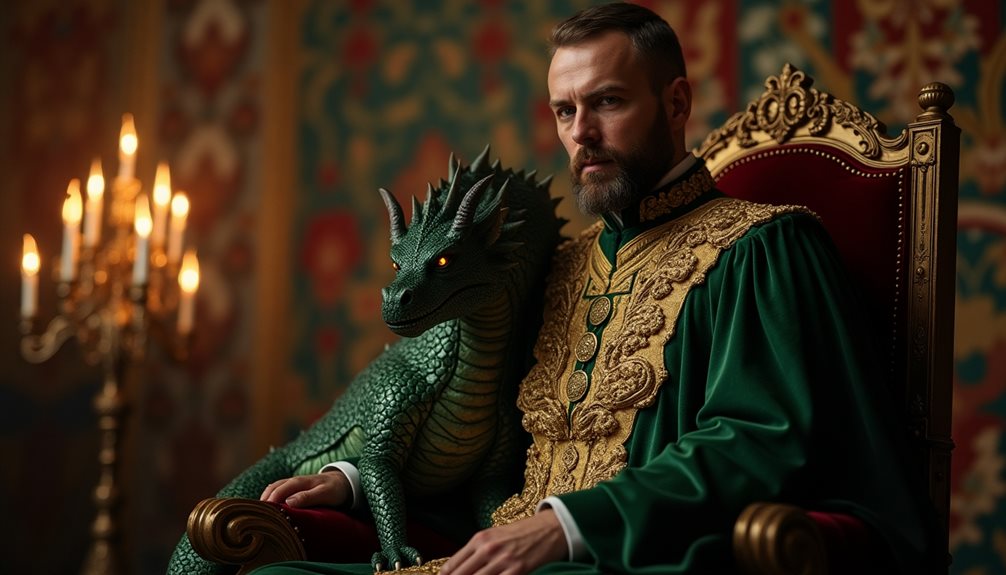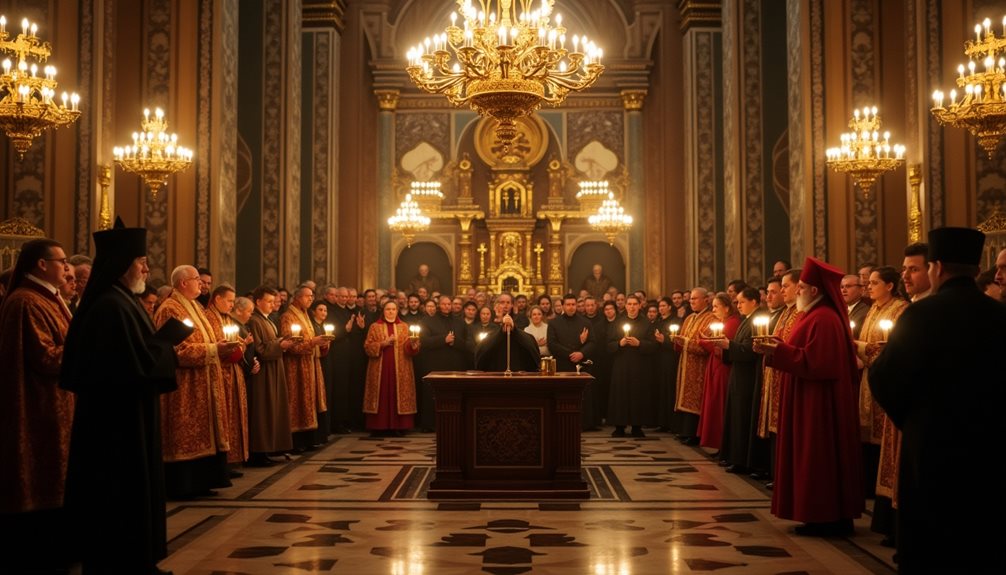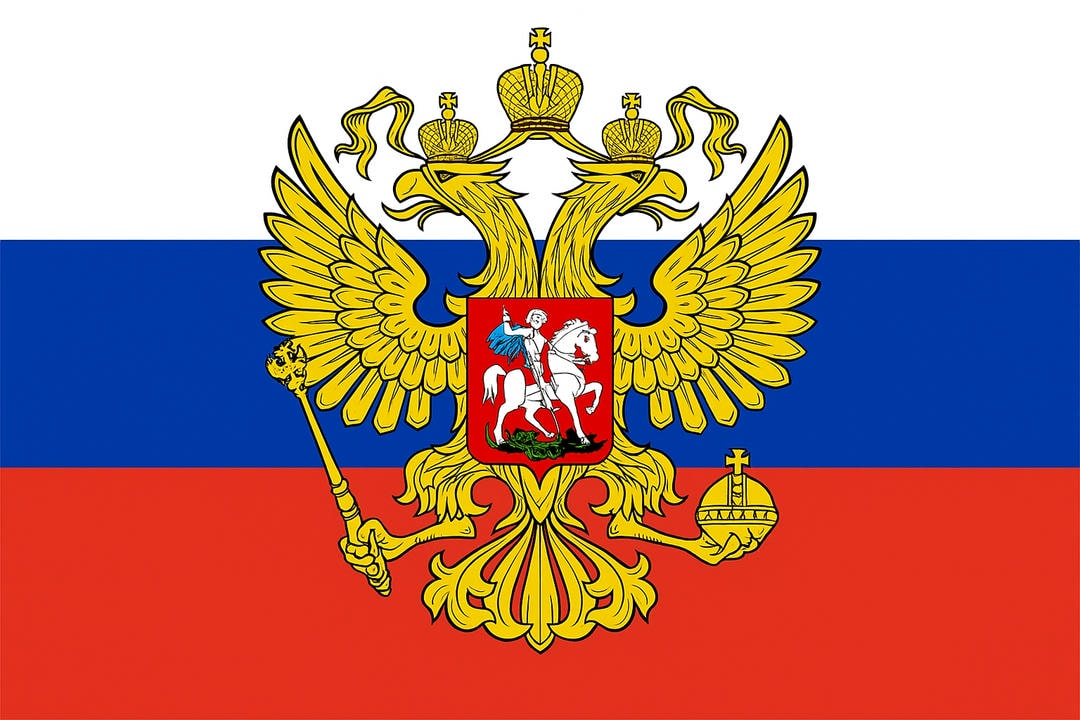The history of Russia’s silent films is a fascinating chronicle of artistic innovation and cultural transformation that extends beyond mere entertainment. From its nascent stages in the late 19th century to the dynamic 1920s, this era saw Russian filmmakers develop novel techniques such as montage editing and expressive acting, setting the stage for modern cinema. As the nation grappled with profound changes, cinema became a mirror for societal upheavals and ideological shifts. The stories behind pioneering filmmakers and iconic stars remain largely untold, inviting a deeper exploration of their influence and the enduring legacy they crafted. What secrets lie within this cinematic past?
Introduction
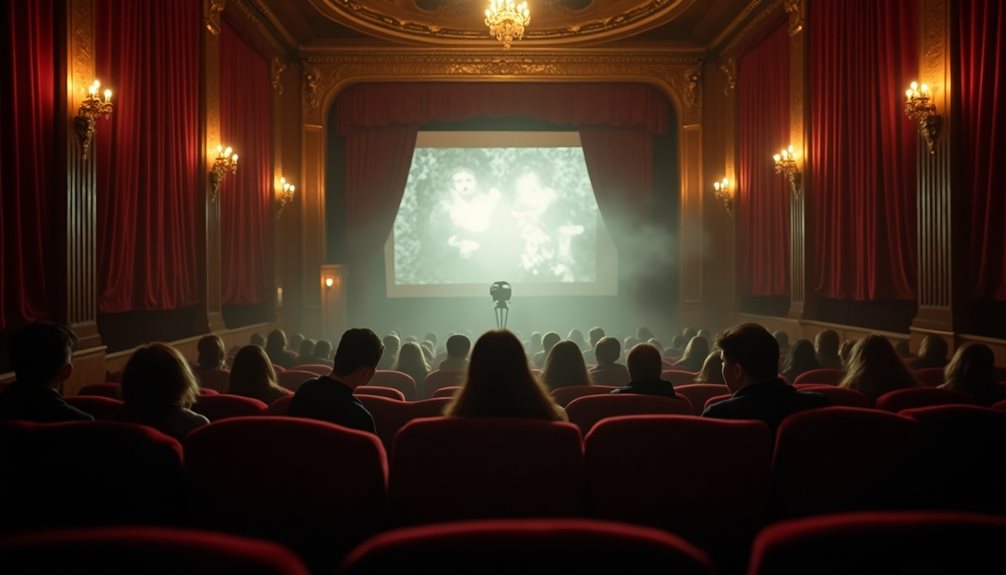
Russia’s silent film era emerged as a significant force in global cinema, marked by artistic innovation and cultural reflection in the early 20th century. Filmmakers like Sergei Eisenstein and Dziga Vertov skillfully blended cultural influences with cinematic techniques, redefining narrative structures and embedding socio-political themes that mirrored the nation’s turbulent history.
This period saw the rise of cinematic techniques such as montage editing and expressive mise-en-scène, which became defining features of Russian silent cinema and expanded the possibilities of visual storytelling. These advancements not only elevated Russian films on the international stage but also established a legacy of creativity that influenced future filmmakers.
Although overshadowed by later achievements, the foundational work of early Russian silent films set the stage for future innovations and cultural impact. The late 19th century marked the beginning of Russian cinema, driven by technological advancements and the artistic ambitions of pioneers like Alexander Drankov and Vasily Goncharov. They experimented with narrative storytelling, integrating cultural elements that resonated with audiences.
The transition from novelty to a medium for artistic expression was crucial in developing Russia’s unique cinematic language. This brief yet pivotal era integrated film into the cultural fabric of Russian society, shaping both domestic and international perceptions of Russian art and culture.
The Silent Film Boom (1910s)
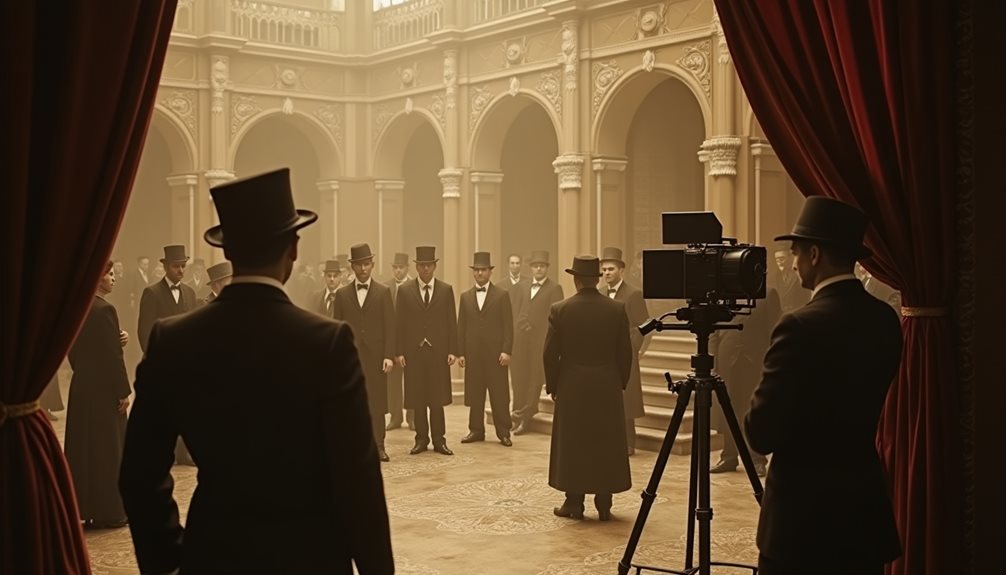
During the Silent Film Boom of the 1910s, Russia experienced a vibrant expansion of cinematic genres that significantly influenced its film industry.
Historical dramas emerged as a dominant genre, weaving compelling narratives with the nation’s rich past. These films innovatively dramatized historical events, revealing deeper social and cultural currents rather than merely reflecting history.
At the same time, comedies employed sophisticated techniques, using visual gags and character-driven humor to critique societal norms and human folly, providing audiences with a delightful escape from everyday life. Adaptations of literary works also gained prominence, bridging literature and cinema. By distilling complex narratives into visual art, filmmakers expanded the storytelling potential of silent films and fostered a unique cinematic identity.
The impact of World War I brought about profound changes in the themes of Russian silent films. This era saw a shift towards narratives that captured the spirit of resilience and unity among people. Filmmakers employed cinematic realism to present vivid depictions of life during challenging times, evoking emotional responses and fostering a sense of community. Themes of sacrifice, heroism, and camaraderie permeated various genres, engaging viewers in shared experiences.
The Russian Revolution of 1917 ushered in another significant transformation in thematic concerns and narrative structures. Filmmakers began to explore stories that emphasized collective identity and innovative ideals, reflecting the dynamic changes in society. This shift not only enriched the cinematic landscape but also encouraged filmmakers to experiment with narrative forms.
During this period, there was a strong focus on collective experiences and shared struggles, infused with urgency through innovative techniques like montage and symbolic imagery. Directors such as Sergei Eisenstein and Dziga Vertov emerged as pivotal figures, creating works that transcended mere entertainment to become powerful expressions of artistic vision and creativity.
Prominent Silent Movie Stars
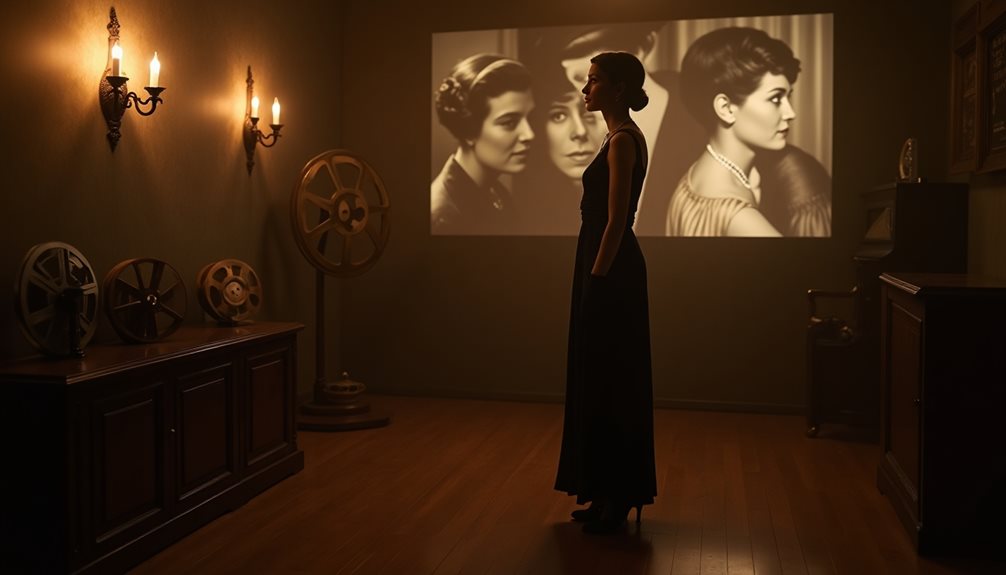
Russia’s silent film era was marked by the emergence of several iconic movie stars who played pivotal roles in shaping the country’s cinematic legacy.
These stars embodied the silent film aesthetics that captivated audiences, relying heavily on expressive gestures, emotive facial expressions, and nuanced physicality to convey complex narratives without dialogue.
Their artistry was deeply intertwined with cultural influences, reflecting the socio-political landscape of early 20th-century Russia.
The performances of these actors not only entertained but also engaged audiences in exploring broader societal themes.
Their work transcended mere entertainment, becoming a conduit for innovation in storytelling.
As these stars navigated the evolving cinematic landscape, they became cultural icons, influencing both domestic and international perceptions of Russian silent cinema.
Vera Kholodnaya: The “Queen of the Screen”
Vera Kholodnaya, recognized as the “Queen of the Screen,” significantly impacted the Russian silent film era with her emotive performances, despite her brief career.Her films, such as By the Fireplace and Be Silent, My Sorrow, Be Silent, exemplify the historical significance and cinematic techniques of the time. Kholodnaya’s performances captured emotional depth and narrative innovation essential to silent film artistry, engaging audiences solely through body language and facial expressions.Though her career was short-lived, her influence remains a benchmark for emotional expression in cinema. Kholodnaya advanced filmic methods and set a standard for future actors, showcasing the enduring potential of visual storytelling.
Ivan Mozzhukhin: Actor and Director
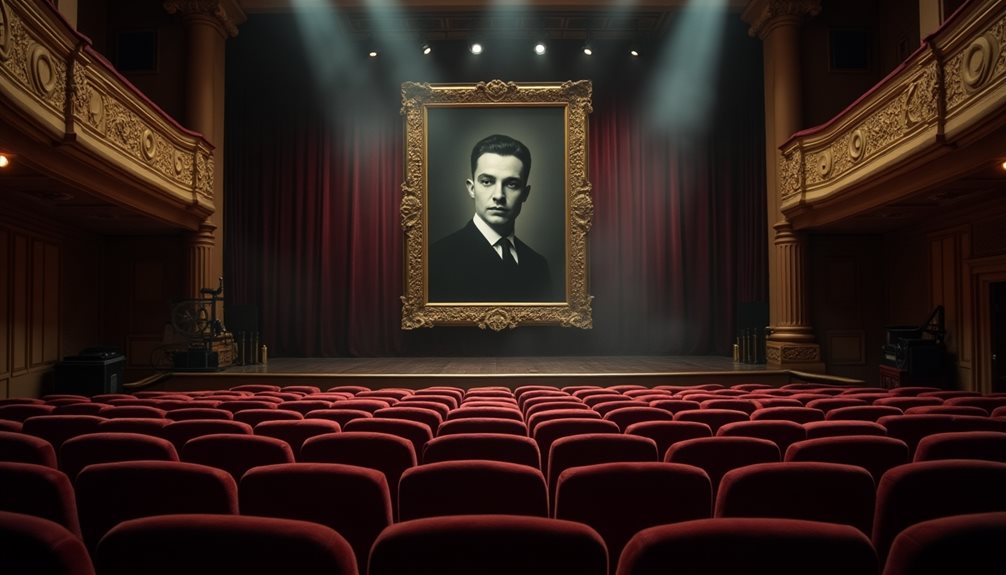
Ivan Mozzhukhin is celebrated as a pivotal figure in Russian silent cinema for his remarkable acting talents and directorial contributions. His performance in Father Sergius exemplifies his ability to convey complex emotions, enhancing the film’s narrative depth and artistic merit.
Mozzhukhin’s work enriched Russian cinema’s cultural fabric and left a lasting impact on the evolution of film acting techniques. His portrayal of a tormented nobleman-turned-monk resonated deeply with audiences, reflecting the societal upheavals in post-revolutionary Russia.
His innovative approach to character depth and emotional expression continues to serve as a benchmark in cinematic performance.
Vera Karalli: Early Russian Cinema Star
Vera Karalli is best remembered for her compelling collaborations with director Yevgeni Bauer, whose artistic vision significantly shaped early Russian cinema. Her dramatic roles, characterized by emotional depth and nuanced expression, contributed to the narrative complexity of Bauer’s films.
Together, they explored new territories of emotional depth and psychological complexity in silent film narratives. Karalli’s ability to convey intense emotion without dialogue complemented Bauer’s innovative filmmaking style, emphasizing visual storytelling and atmospheric depth.
Their partnership resulted in films that pushed narrative boundaries, exploring themes of love, loss, and existential despair. Karalli’s exceptional talent paved the way for future filmmakers to experiment with nuanced storytelling techniques.
Vitold Polonsky:Versatile Performer in Silent Film
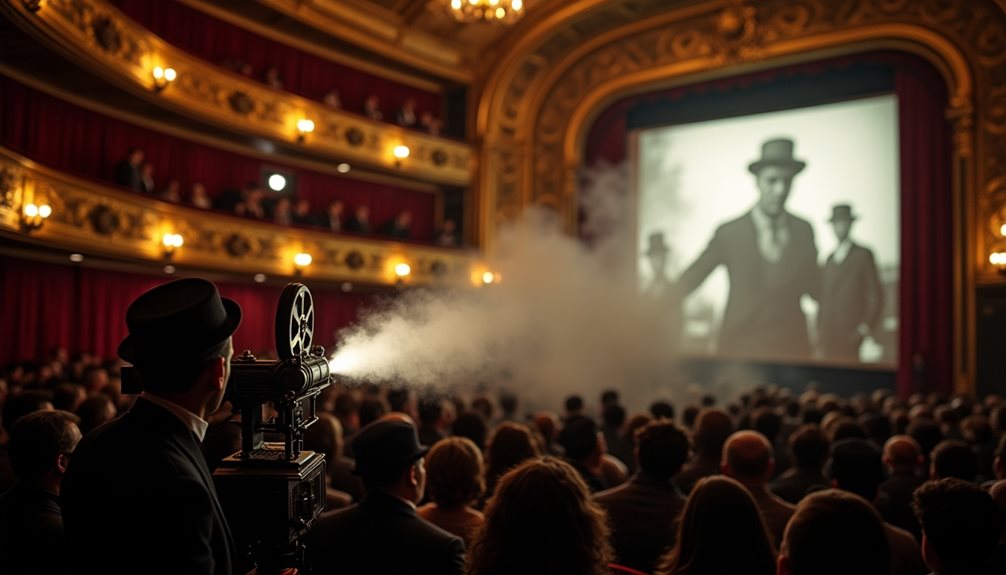
Vitold Polonsky stands out in Russian silent cinema for his remarkable versatility across various genres. His performances reflect a profound understanding of character development and emotional nuance, elevating early Russian film storytelling.
Polonsky’s adaptability highlights the broader evolution of silent film during a dynamic period of exploration and innovation. His genre versatility not only showcased his talent but also served as a blueprint for subsequent actors, pushing traditional acting norms.
His contributions encapsulated a transformative era where silent films began to explore their artistic potential.
Vera Orlova: Silent Cinema’s Emotion Expert
Vera Orlova is celebrated for her ability to convey profound emotion through her performances in Russia’s silent film era. Her expressive prowess allowed her to engage audiences through nuanced facial expressions and gestures.
Orlova’s mastery set her apart in an industry reliant on visual communication. Her performances were marked by emotional depth that resonated with audiences across cultural barriers.
By innovating the art of silent cinema with subtle gestures and intense gazes, Orlova breathed life into her characters, leaving an indelible mark on the cinematic landscape and inspiring future generations of actors.
Vladimir Maksimov: Cinema Evolution Leader
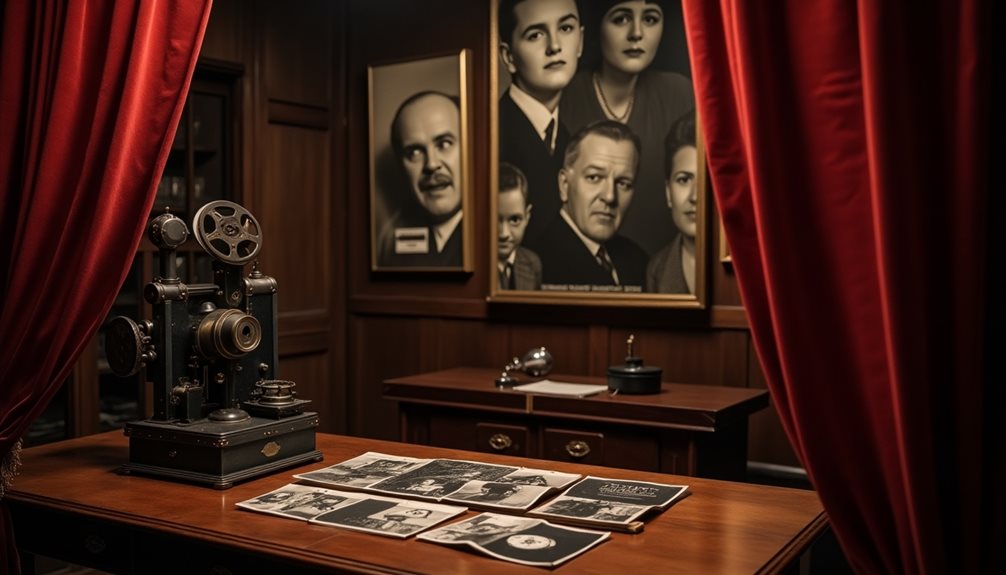
Vladimir Maksimov emerges as an indispensable figure in Russian silent cinema, whose performances significantly shaped the artistic landscape of the era. His roles illuminated complex narratives while advancing cinematic techniques that resonated beyond Russia’s borders.
Maksimov effectively bridged the emotive subtleties characteristic of Vera Kholodnaya’s influence with the dramatic intensity emblematic of Ivan Mozzhukhin’s legacy. By embodying characters that resonated deeply with audiences, he established a template for silent film acting that harmonized emotional depth with visual storytelling.
His impact on Russian cinema reflects the innovative spirit defining early 20th-century film artistry.
Conclusion
The legacy of Russian silent cinema extends far beyond its own era, laying a foundational framework that profoundly influenced subsequent film movements worldwide.
Directors like Sergei Eisenstein pioneered editing techniques that transcended mere storytelling, transforming film into a dynamic medium of emotional and intellectual engagement. These cinematic innovations laid the groundwork for subsequent movements such as the French New Wave and Italian Neorealism, which embraced non-linear narratives and visual experimentation.
Russian silent cinema’s legacy endures, offering a blueprint for filmmakers who seek to push boundaries and explore the limitless possibilities of visual storytelling.

